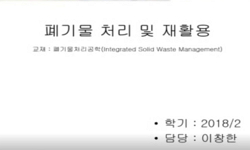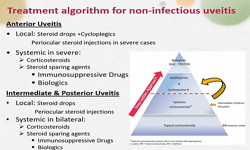Chronic kidney disease (CKD) is a major public health problem. It is estimated that 400-600 million adults worldwide have CKD. Furthermore, more than 5% of the adult population has some form of kidney damage. CKD is not an isolated disease, but is str...
http://chineseinput.net/에서 pinyin(병음)방식으로 중국어를 변환할 수 있습니다.
변환된 중국어를 복사하여 사용하시면 됩니다.
- 中文 을 입력하시려면 zhongwen을 입력하시고 space를누르시면됩니다.
- 北京 을 입력하시려면 beijing을 입력하시고 space를 누르시면 됩니다.

특집-만성 콩팥병, 적극적 치료가 필요하다 ; 만성 콩팥병 단계에 따른 치료의 최신 경향 = Special Review : Recent therapeutic strategies based on the stage of chronic kidney disease
한글로보기https://www.riss.kr/link?id=A76373480
- 저자
- 발행기관
- 학술지명
- 권호사항
-
발행연도
2009
-
작성언어
-
- 주제어
-
KDC
500
-
등재정보
KCI등재후보
-
자료형태
학술저널
- 발행기관 URL
-
수록면
521-527(7쪽)
-
KCI 피인용횟수
2
- 제공처
-
0
상세조회 -
0
다운로드
부가정보
다국어 초록 (Multilingual Abstract)
Chronic kidney disease (CKD) is a major public health problem. It is estimated that 400-600 million adults worldwide have CKD. Furthermore, more than 5% of the adult population has some form of kidney damage. CKD is not an isolated disease, but is strongly linked to other health problems, such as diabetes and cardiovascular diseases (CVD), with high blood pressure as the main indicating risk factor. For example, every year millions die prematurely of CKD-linked CVD alone. However, adverse outcomes of CKD can be prevented through early detection and treatment. Earlier stages of the disease can be detected through routine laboratory measurements. Therefore, a clinical action plan should be developed for each patient, based on the stage of disease. The basic principle of treatment for CKD is to prevent the further deterioration of renal function and to minimize complications, including cardiovascular events. For this purpose, treatment should include specific therapy based on the underlying disease; an evaluation of comorbid conditions; a method of slowing the loss of renal function; the prevention and treatment of CVD as well as complications associated with decreased renal function; and replacement treatment for renal function, using dialysis and transplantation, if signs and symptoms of uremia are present. (Korean J Med 76:521-527, 2009)
참고문헌 (Reference)
1 Cannella G, "Therapy of secondary hyperparathyroidism to date: vitamin D analogs, calcimimetics or both?" 19 : 399-402, 2006
2 Kwen JH, "The study of anemia in stable chronic kidney disease patients not receiving dialysis treatment" 22 : 63-72, 2003
3 Sica DA, "The risks and benefits of therapy with aldosterone receptor antagonist therapy" 2 : 71-77, 2007
4 김성권, "The Prevalence of Chronic Kidney Disease (CKD) and the Associated Factors to CKD in Urban Korea: A Population-based Cross-sectional Epidemiologic Study" 대한의학회 24 : 11-21, 2009
5 Baigent C, "Study of Heart and Renal Protection (SHARP)" S207-S210, 2003
6 Mann JF, "Renal outcomes with telmisartan, ramipril, or both, in people at high vascular risk (the ONTARGET study): a multicentre, randomised, double-blind, controlled trial" 372 : 547-553, 2008
7 Colhoun HM, "Primary prevention of cardiovascular disease with atorvastatin in type 2 diabetes in the Collaborative Atorvastatin Diabetes Study (CARDS): multicentre randomised placebo-controlled trial" 364 : 685-696, 2004
8 National Kidney Foundation, "K/DOQI clinical practice guidelines for chronic kidney disease: evaluation, classification, and stratification" 39 (39): S1-S266, 2002
9 National Kidney Foundation, "K/DOQI clinical practice guidelines for bone metabolism and disease in chronic kidney disease" 42 (42): S1-S201, 2003
10 National Kidney Foundation, "K/DOQI clinical practice guidelines and clinical practice recommendations for anemia in chronic kidney disease: 2007 update of hemoglobin target"
1 Cannella G, "Therapy of secondary hyperparathyroidism to date: vitamin D analogs, calcimimetics or both?" 19 : 399-402, 2006
2 Kwen JH, "The study of anemia in stable chronic kidney disease patients not receiving dialysis treatment" 22 : 63-72, 2003
3 Sica DA, "The risks and benefits of therapy with aldosterone receptor antagonist therapy" 2 : 71-77, 2007
4 김성권, "The Prevalence of Chronic Kidney Disease (CKD) and the Associated Factors to CKD in Urban Korea: A Population-based Cross-sectional Epidemiologic Study" 대한의학회 24 : 11-21, 2009
5 Baigent C, "Study of Heart and Renal Protection (SHARP)" S207-S210, 2003
6 Mann JF, "Renal outcomes with telmisartan, ramipril, or both, in people at high vascular risk (the ONTARGET study): a multicentre, randomised, double-blind, controlled trial" 372 : 547-553, 2008
7 Colhoun HM, "Primary prevention of cardiovascular disease with atorvastatin in type 2 diabetes in the Collaborative Atorvastatin Diabetes Study (CARDS): multicentre randomised placebo-controlled trial" 364 : 685-696, 2004
8 National Kidney Foundation, "K/DOQI clinical practice guidelines for chronic kidney disease: evaluation, classification, and stratification" 39 (39): S1-S266, 2002
9 National Kidney Foundation, "K/DOQI clinical practice guidelines for bone metabolism and disease in chronic kidney disease" 42 (42): S1-S201, 2003
10 National Kidney Foundation, "K/DOQI clinical practice guidelines and clinical practice recommendations for anemia in chronic kidney disease: 2007 update of hemoglobin target"
11 Levin A, "Identification of patients and risk factors in chronic kidney disease: evaluating risk factors and therapeutic strategies" 16 (16): 57-60, 2001
12 Iseki K, "Hypocholesterolemia is a significant predictor of death in a cohort of chronic hemodialysis patients" 61 : 1887-1893, 2002
13 Expert Panel on Detection Evaluation and Treatment of High Blood Cholesterol in Adults, "Executive Summary of the Third Report of the National Cholesterol Education Program (NCEP) Expert Panel on Detection, Evaluation, and Treatment of High Blood Cholesterol in Adults (Adult Treatment Panel III)" 285 : 2486-2497, 2001
14 Lowrie EG, "Death risk in hemodialysis patients: the predictive value of commonly measured variables and an evaluation of death rate differences between facilities" 15 : 458-482, 1990
15 Perazella MA, "Current status of gadolinium toxicity in patients with kidney disease" 4 : 461-469, 2009
16 Levey AS, "Controlling the epidemic of cardiovascular disease in chronic renal disease: what do we know? what do we need to learn? where do we go from here?" 32 : 853-906, 1998
17 Lowrie EG, "Commonly measured laboratory variables in hemodialysis patients: relationships among them and to death risk" 12 : 276-283, 1992
18 Bots ML, "Common carotid intima-media thickness and risk of stroke and myocardial infarction" 96 : 1432-1437, 1997
19 Hayashi K, "Ca2+ channel subtypes and pharmacology in the kidney" 100 : 342-353, 2007
20 Wanner C, "Atorvastatin in patients with type 2 diabetes mellitus undergoing hemodialysis" 353 : 238-248, 2005
21 Parving HH, "Aliskiren combined with losartan in type 2 diabetes and nephropathy" 358 : 2433-2446, 2008
22 Fellström BC, "AURORA Study Group. Rosuvastatin and cardiovascular events in patients undergoing hemodialysis" 360 : 1395-1407, 2009
동일학술지(권/호) 다른 논문
-
- 대한내과학회
- 최희경 ( Hee Kyoung Choi )
- 2009
- KCI등재후보
-
다운증후군 환자에서 병발한 재발성 다발연골염과 괴저성 농피증
- 대한내과학회
- 조용덕 ( Yong Duck Cho )
- 2009
- KCI등재후보
-
특집-만성 콩팥병, 적극적 치료가 필요하다 : 우리나라의 만성 콩팥병
- 대한내과학회
- 진호준 ( Ho Jun Chin )
- 2009
- KCI등재후보
-
특집-만성 콩팥병, 적극적 치료가 필요하다 : 만성 콩팥병의 진단 및 검사
- 대한내과학회
- 권순효 ( Soon Hyo Kwon )
- 2009
- KCI등재후보
분석정보
인용정보 인용지수 설명보기
학술지 이력
| 연월일 | 이력구분 | 이력상세 | 등재구분 |
|---|---|---|---|
| 2023 | 평가예정 | 계속평가 신청대상 (계속평가) | |
| 2021-01-01 | 평가 | 등재후보학술지 선정 (신규평가) |  |
| 2018-12-01 | 평가 | 등재후보 탈락 (계속평가) | |
| 2017-12-01 | 평가 | 등재후보로 하락 (계속평가) |  |
| 2013-01-01 | 평가 | 등재학술지 유지 (등재유지) |  |
| 2010-01-01 | 평가 | 등재학술지 유지 (등재유지) |  |
| 2008-01-01 | 평가 | 등재학술지 유지 (등재유지) |  |
| 2006-05-15 | 학술지명변경 | 외국어명 : Korean Journal of Medicine -> The Korean Journal of Medicine |  |
| 2006-01-01 | 평가 | 등재학술지 유지 (등재유지) |  |
| 2003-01-01 | 평가 | 등재학술지 선정 (등재후보2차) |  |
| 2002-01-01 | 평가 | 등재후보 1차 PASS (등재후보1차) |  |
| 2000-07-01 | 평가 | 등재후보학술지 선정 (신규평가) |  |
학술지 인용정보
| 기준연도 | WOS-KCI 통합IF(2년) | KCIF(2년) | KCIF(3년) |
|---|---|---|---|
| 2016 | 0.1 | 0.1 | 0.1 |
| KCIF(4년) | KCIF(5년) | 중심성지수(3년) | 즉시성지수 |
| 0.11 | 0.1 | 0.259 | 0.02 |




 KCI
KCI KISS
KISS






